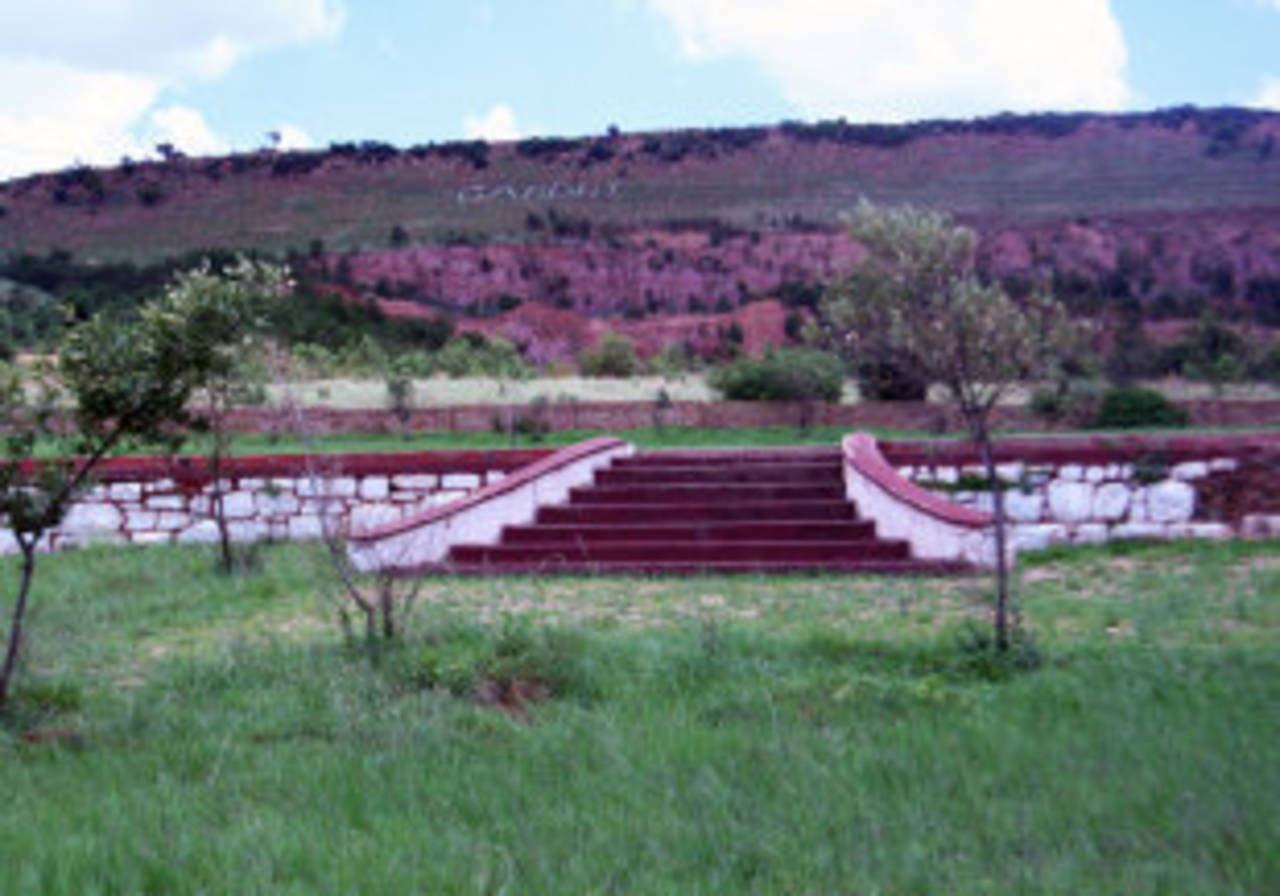Walking through history at Tolstoy Farm
Once a crucible for Mahatma Gandhi's philosophies of community living and civil disobedience, Tolstoy Farm is now a desolate place a few kilometres away from the suburb of Lenasia
Sidharth Monga
17-Dec-2013

A stone inscription dedicated to Mahatma Gandhi on a hill overlooking Tolstoy Farm • Sidharth Monga
Around noon on Sunday, Nelson Mandela's body was lowered into his grave. Around noon on Sunday, in spirit, you find yourself in the company of another inspirational man in this country. About seven kilometres from the Indian settlement of Lenasia, through a gravel road not many can navigate, there is a boundary wall erected around what looks like wasteland. Only when you approach it do you see a giant inscription that says "Gandhi" on a big hill overlooking this land. You are headed towards Tolstoy Farm, where Mahatma Gandhi lived on and off with his fellow protestors for about four years in the early 1900s.
It is a peaceful plot of land. There is no mobile signal here. The hills surrounding the farm are green. However, the farm, as history knew it, is no more. Although a humble structure at the best of times - a shed and four dilapidated rooms - there is nothing left of it now. A brick company, which owned the land, has given it up, but it is difficult to look after the farm, given how far it is from the surrounding urban areas.
About 42 kilometres from Johannesburg, and two kilometres from Lawley train station, Tolstoy Farm is now just a piece of land demarcated from the area around it by a three-foot-high wall. There is no large board outside, no milestones on the way, no trail marks - nothing to suggest this narrow, unpaved lane will take you to a place of such historic importance. Mohan Hira, a 74-year-old Gandhian who looks 55, a former karate practitioner and now a coach, and a local leader in Lenasia, knows the way well. He was the one who gathered people in 2010 to carry those white stones up the hill and inscribe 'Gandhi' there. The stones need a new coat of paint now. He comes here often to ensure that the wall has not been brought down by riff-raffs. He has done Gandhi-style walks from Johannesburg to Natal for charity.
Gandhi used to walk from Tolstoy Farm down to the Lawley station when he needed to go to Johannesburg. However, if you were a person of colour in that era, you needed a pass to get into the city. Gandhi organised a protest where nearly 2000 people made a bonfire out of their passes. This is understood to have been the first organised protest against segregation policies in South Africa. His protests in South Africa and the ideals of satyagraha (a philosophy related to non-violent, civil disobedience) and community living would have been thought of there.
There is an amphitheatre still left - a brick platform in the middle, and four concentric semi-circular rows in front of it. You can imagine Gandhi sitting there, speaking to his fellow inhabitants of the farm, and chalking out the strategy to protest. He has attributed the success of his satyagraha to his stay here. It must have been difficult living here, though, specially for a vegetarian. There was no Lenasia back then, possibly it was just an army base called Lenz.
You sit quietly on one of the staircases in the amphitheatre for minutes. Then you turn around and see the hill with its inscription of Gandhi. The hills are always there, challenging you. The hills, they have eyes, they must know everything.
On the way back, you cut through Soweto, and past Vilakazi Street, which has been cordoned off by the police. Like Lenasia had its Asians, this area was demarcated for the black population back in the day. It is only a few hours since the Mandela funeral. Cars are still there. A few people are still dancing and singing, celebrating the life of Mandela. T-shirts with "46664" on them are being sold. Then you reach Johannesburg, once an exclusive preserve of white people, where all are free to live and work now. It wouldn't have been possible without those two men in Lenasia and Soweto.
Sidharth Monga is an assistant editor at ESPNcricinfo